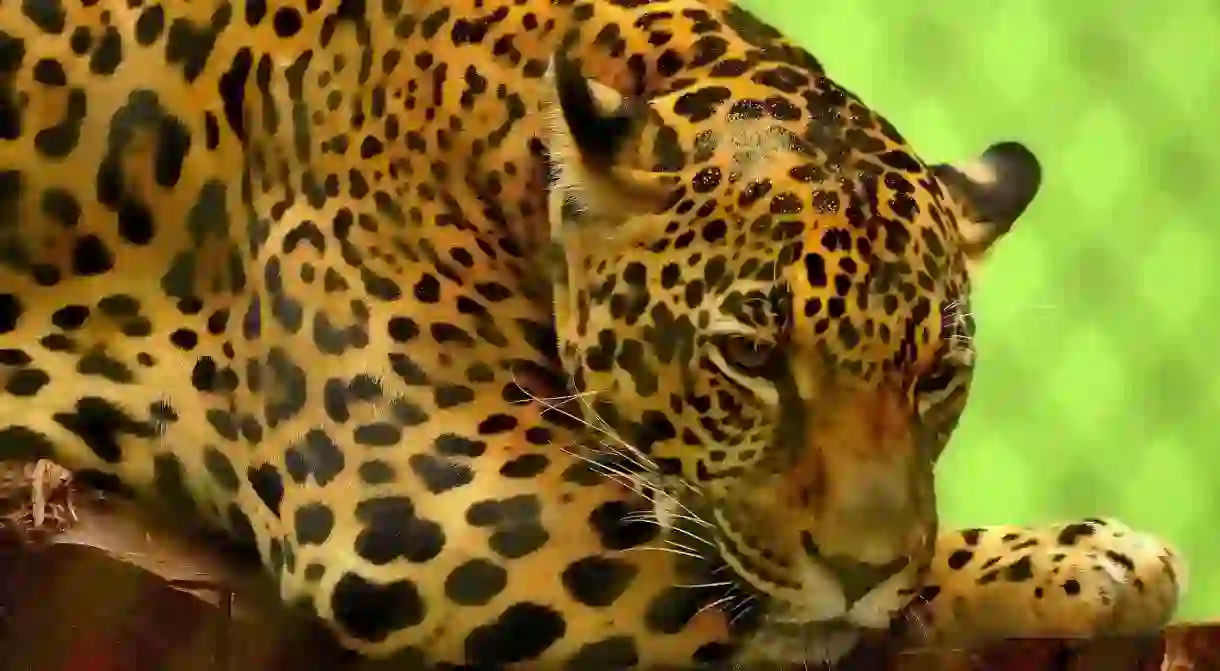Why Traditional Chinese Medicine Could be Endangering Jaguars

Conservationists fear that more than 100 jaguars – a species whose numbers are on the decline – may have been killed in less than a year to supply a trade in their body parts with China.
With a rise in Chinese construction projects globally, conservationists have grown concerned that local people in developing nations are facilitating an illicit trade with Chinese workers for the body parts of endangered animals.
The latest concern is a growing illegal trade in jaguar fangs in South America, which has been linked to Chinese construction projects. According to a report by Nature that was cited in The Guardian, jaguar deaths have been on the rise, with instances of the big cats being found dead with their body mostly intact, but with their fangs removed.

Big cats used in Traditional Chinese Medicine
Tiger parts have been used by practitioners of Traditional Chinese Medicine (TCM) for centuries. Different parts of the tiger, such as its bones, whiskers, and even its reproductive organs are used to treat different ailments. However, as tiger parts are becoming scarcer, a market is opening up for organs from other big cats, including the jaguar.
“In China, and other parts of Asia, the teeth of large cats are in demand, partially as decoration or because of the mystical powers attached to it,” says Vincent Nijman, a conservation researcher at Oxford Brookes University. “With less and less tigers being around, a shift to other large cats has occurred. This includes jaguars.”
In Traditional Chinese Medicine, tiger teeth are sometimes prescribed for asthma or genital sores, or to relieve fever, so it’s thought that they could be using the jaguar fangs for the same purpose. With regard to their possible use in Traditional Chinese Medicine, Nijman stresses “there is nothing traditional about the use of jaguar teeth.”
Experts believe it’s just as likely that the jaguar fangs are being used as talismans, decorative hangers, with the fangs representing strength or worn as a symbol of wealth.
The threat of becoming endangered
Jaguars were once commonly found in much of the southern US, Central America and South America. Today, their numbers have drastically fallen due to deforestation and farmers shooting them to protect their livestock. The prospect of jaguars being used to supplement Chinese traditional medicine now threatens to reduce their numbers even further.

It’s feared that this illicit trade has a global reach, as Chinese companies have been setting up vast construction projects with more than 60 countries to construct ports, power stations, rail lines, roads, tunnels and bridges in the developing world. “These projects are manned by Chinese workers, and they go back and forth with local people and also send things back to their families in China,” said Nijman. “Among the things they send back are illicit bones, horns and skin valued by traditional medicine. There is not much sign of them using restraint. At the end of the day, almost anything that can be killed and traded will be.”
However, there are several conservationist groups and NGOs working to combat the issue. TRAFFIC – the wildlife trade monitoring network – is one of them. Meanwhile, Nijman, along with his PhD student Thaís Morcatty, who is from Brazil, focus on the international cat trade from South America. He has also been working in Asia for many years to research the wildlife trade, working with governments and international and local NGOs, hopefully leading to better regulation.













